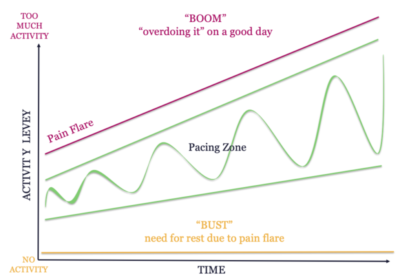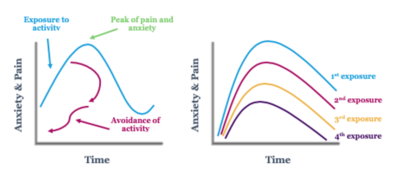12 Quick Tips for Introducing Pacing into Your Day
Northern Pain Centre is committed to giving patient’s practical steps for managing many of the challenges they face as a result of their pain. Welcome to our 12 Quick Tips Series.

Here are our 12 quick tips for introducing pacing into your day using graded exposure and graded activity:
- Plan your day – stick to the plan, not how you feel (learn more about this here)
- Create short, timed windows of activity and rest
- Change position and activity regularly to avoid additional pain
- Break tasks into smaller activities
- Space bigger tasks over the week not day
- Create a pacing plan for specific activity goals (create a pacing plan here)
- Repeat activity goals at least 3-4 times a week (to learn more about the importance of regular activity on pain visit here)
- Continue planned activities despite changes in pain
- Manage flares – if it’s your “usual” pain. General rule for flare management (create a flare management plan here)
- <12hrs maintain activity
- 24-48hrs modify activity
- 48hrs drop your activity by 50-75%. But, try to keep moving despite pain.
- Write a plan for obstacles
- Be patient – a slow and steady approach minimises flares in pain and improves quality of life
- Record your progress – to see how far you have come
What is Pacing?
Pacing is a strategy used for movement, which helps us maintain regular activity without overdoing things. Pacing teaches us about our pain, current limitations and how we can gradually build on these to do more. The aim of pacing is to avoid the “boom and bust cycle” and minimise over-doing things on the good days (“boom”) which leads to under-doing things on the bad days (“bust”).
Activity pacing involves regulating activity time, frequency or intensity over a gradual period of time. Its aim is to create a plan which is not adjusted to pain levels, allowing us to conserve energy for what is of value to us, whilst moving forward with our ability to achieve specific goals over time whilst improving our tolerance to these goals.
The principles for pacing include:
- Setting short, timed windows of activity
- Changing position and activity regularly
- Breaking tasks into smaller jobs through-out the day
- Breaking large tasks into smaller jobs over a week
- Taking short, frequent breaks
- Sticking with your plan, not your limits (just cause your pain permits, don’t overdo things on a good day)
- Learning about your pain and current limitations
- Self-management and self-discipline
Steps to creating a pacing plan for activity:
- Identifying and setting realistic goals (learn more about this here)
- Planning your day to avoid “over doing things” (learn more about this here)
- Creating a specific activity pacing plan and sticking with it (learn more about creating a pacing plan here)
- Working to the plan not how your pain “feels” (learn more about boom and bust cycles here)
- Being patient – being slow and steady is the key to achieving your goals
Over time, sticking with your pacing goals allows you to be able to do more without reaching your pain threshold and having a flare in pain. It also reduces the need for prolonged periods of rest from overdoing things.

Learn more about the research behind pacing for chronic pain here.
Read a patient account of using pacing not just for activity but other area’s of her life here.
What is Graded Exposure and Graded Activity?
These are treatments which use behavioural and psychological approaches to improve activity tolerance. The purpose of these treatments is to reduce fear and anxiety associated with movement, whilst recalibrating the level of pain felt with these activities. The thought is that the greater the exposure to small levels of “graded” activity, the more normal these activities become and the less pain will be triggered. This is similar to the concept of “desensitisation”, where repeated exposure helps the mind and body to readjust and normalise the activity over time.
- Graded exposure: you create a hierarchy of feared activities, which are worked through from least feared to most feared. Each feared activity is talked through to understand the irrational and counterproductive beliefs about this fear, which leads to a reduction in anxiety associated with an activity. The aim of this treatment is to reduce the fear-avoidance cycle.
- Graded activity: you focus on functional activities for short timeframes with the aim of meeting specific functional goals and increasing activity tolerance. This activity is slowly built upon over time, to allow greater tolerance of this activity.

Learn more about the research on graded exposure and graded activity here.
Read More Quick Tips
- 12 Quick Tips for Improving Gut Health
- 12 Quick Tips for Introducing Pacing into Your Day
- 12 Quick Tips for Planning Your Day with Chronic Pain
- 12 Quick Tips for Moving More
- 12 Quick Tips for Setting Goals with Chronic Pain
- 12 Quick Tips for a Better Quality Sleep
- 12 Quick Tips for Improving Your Nutrition